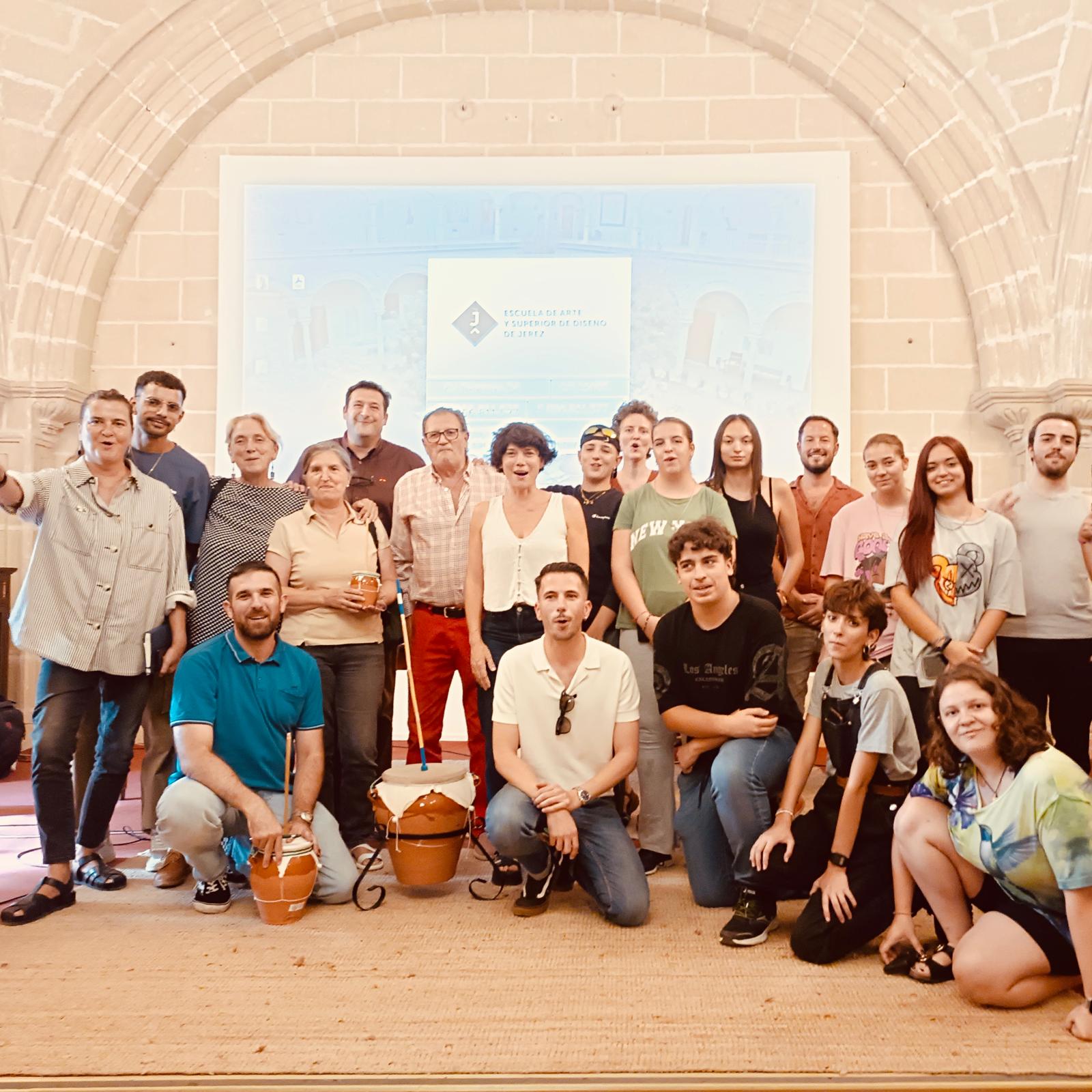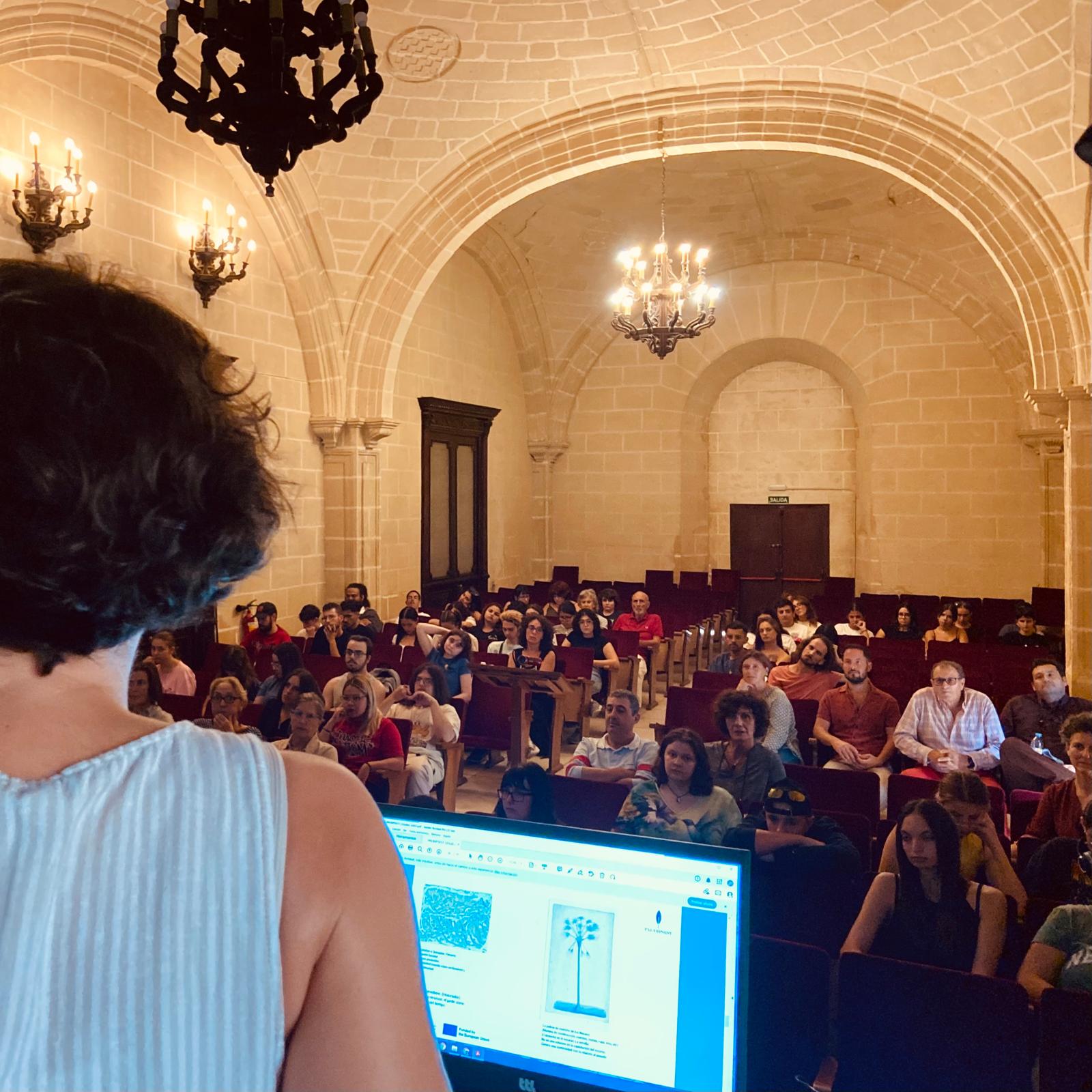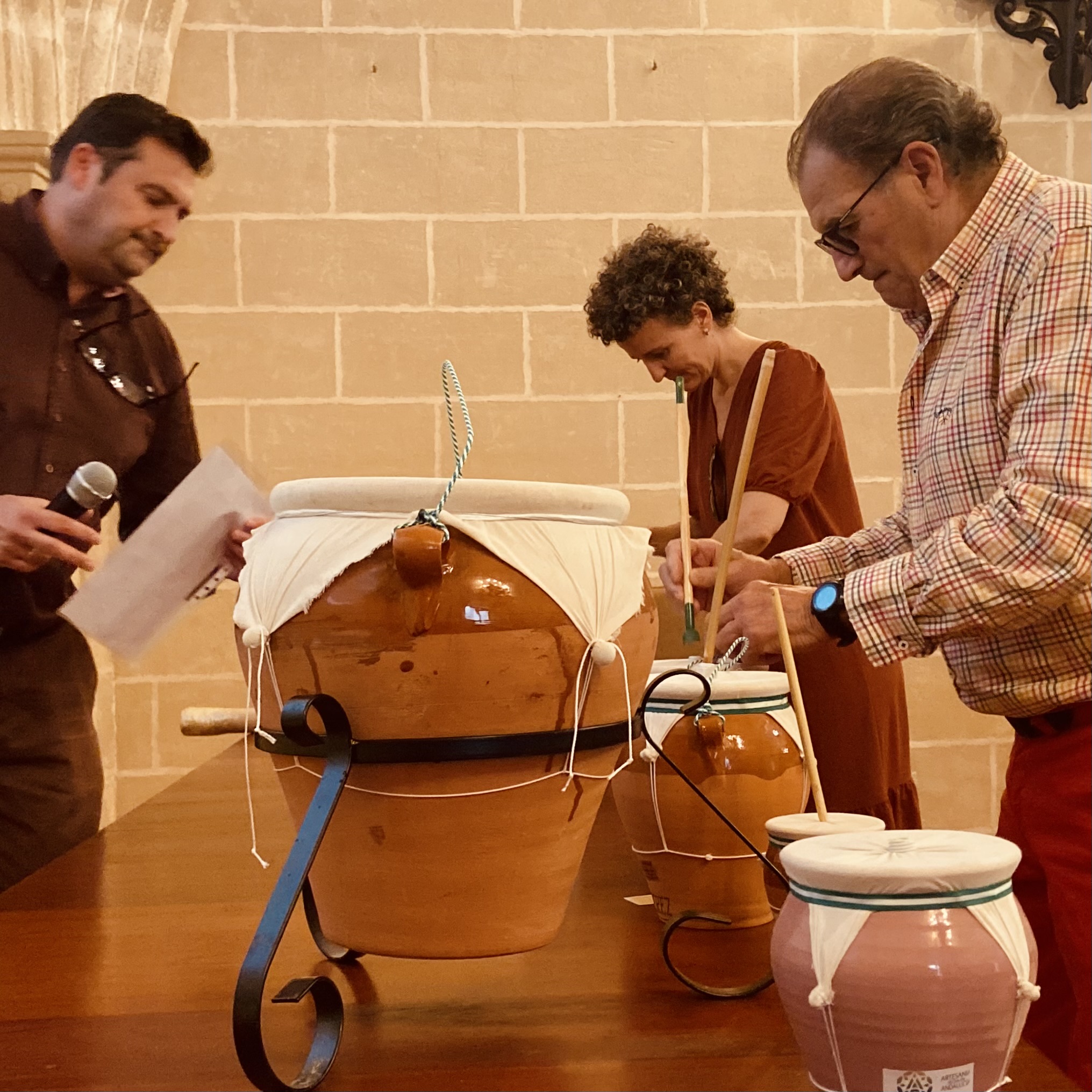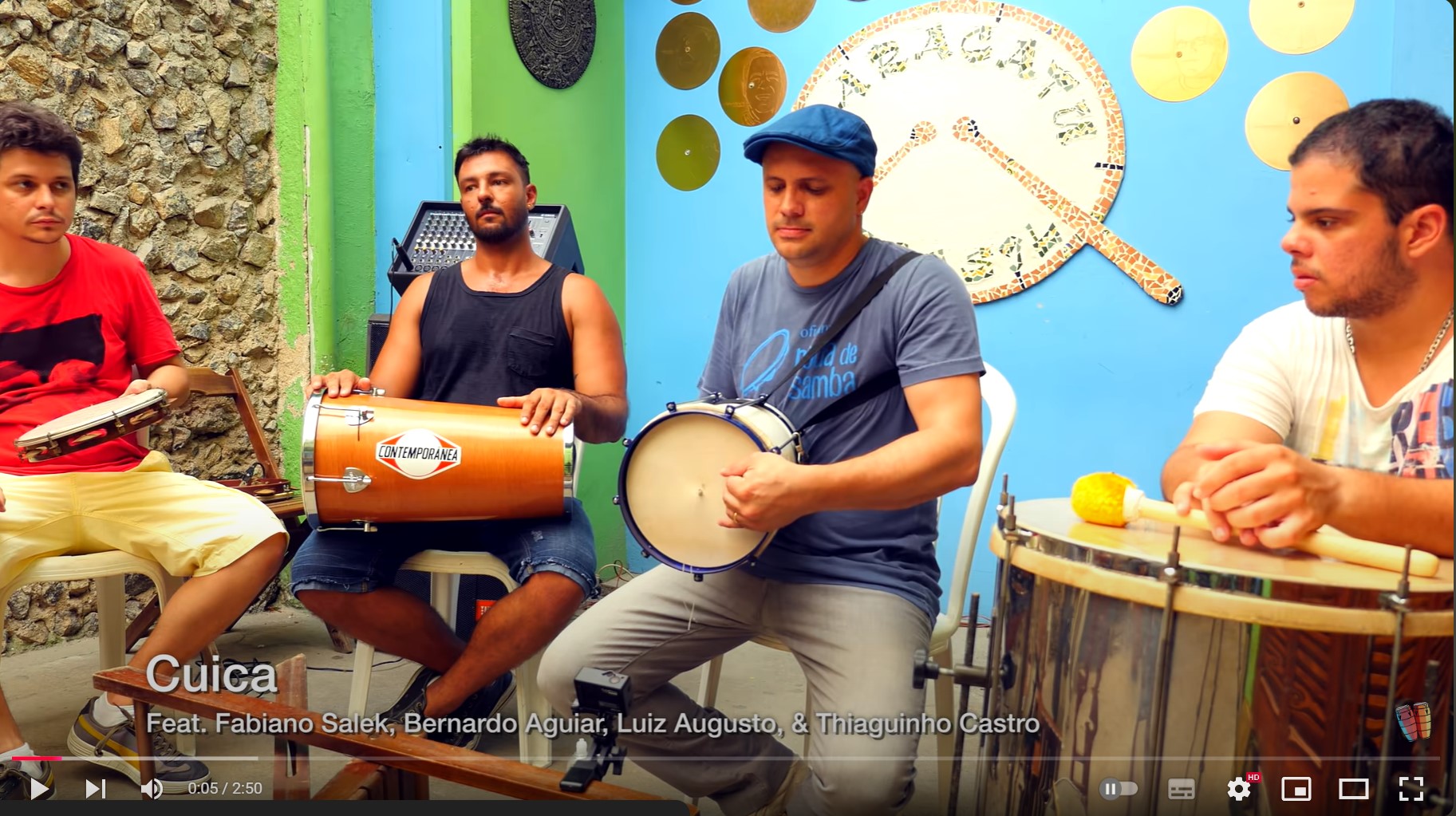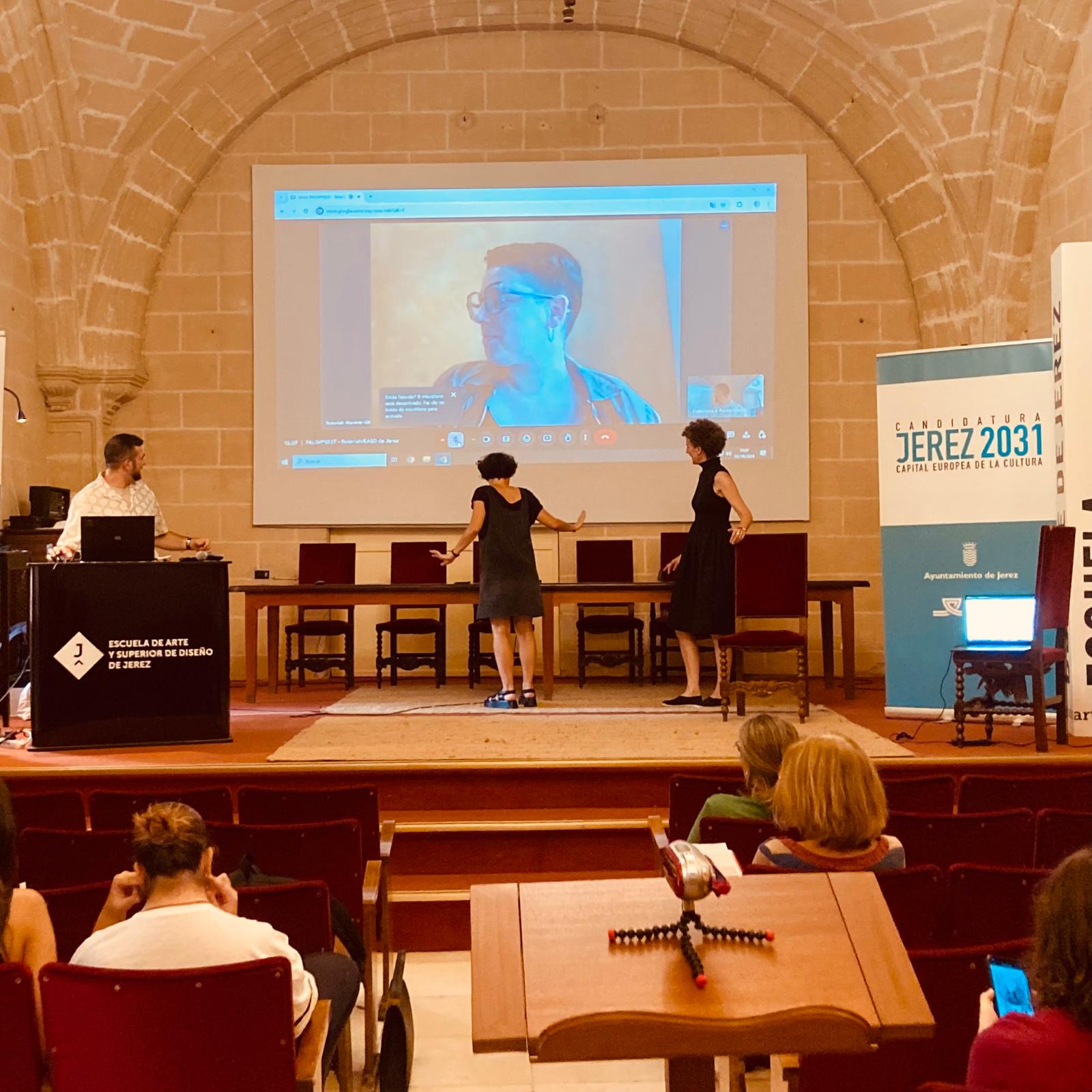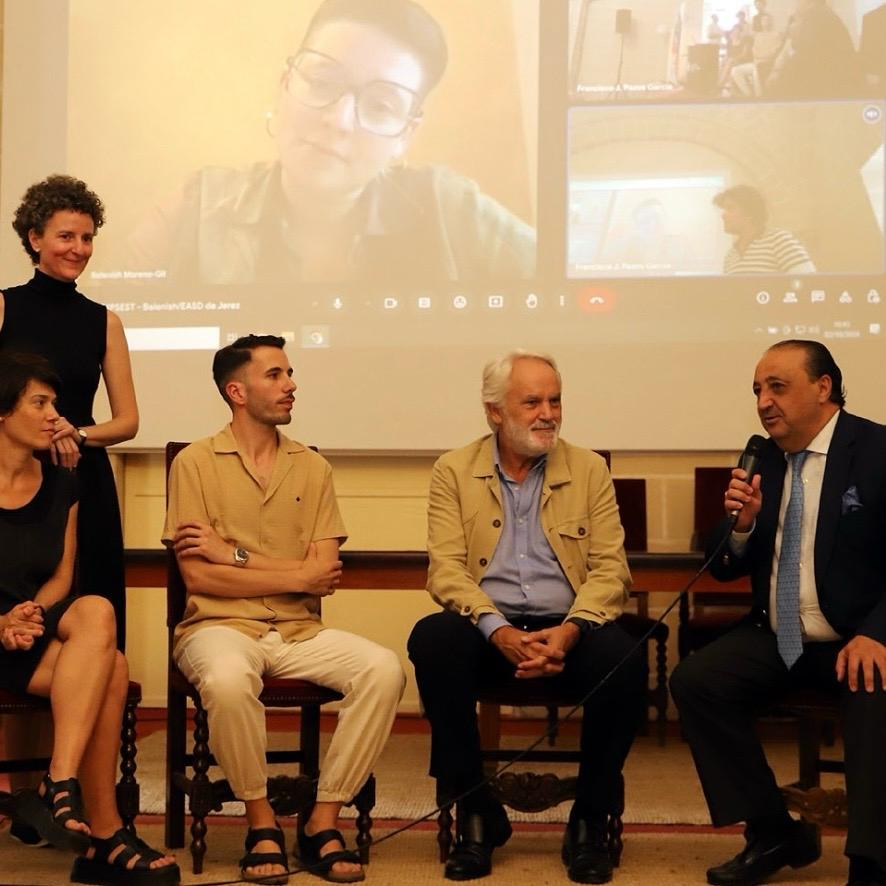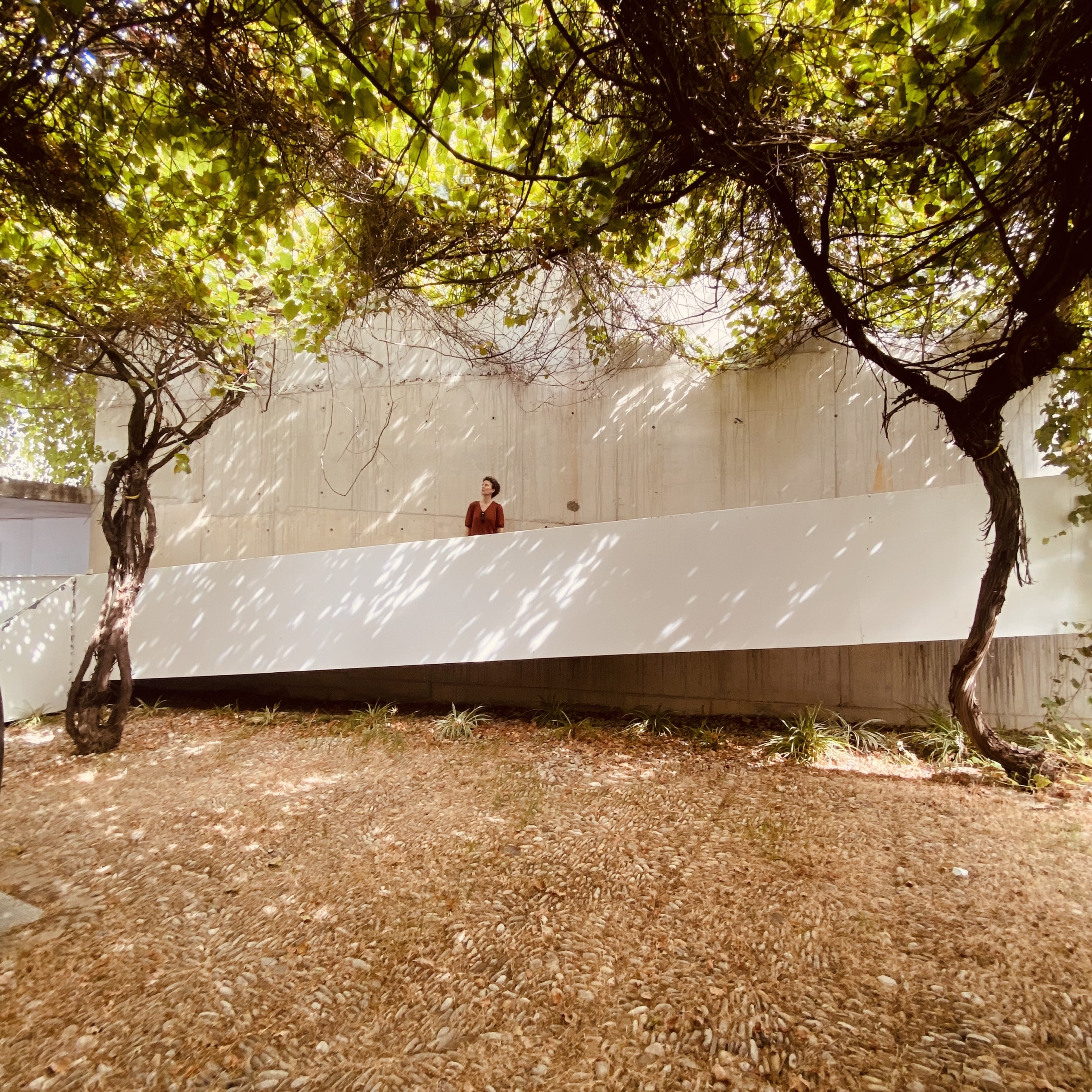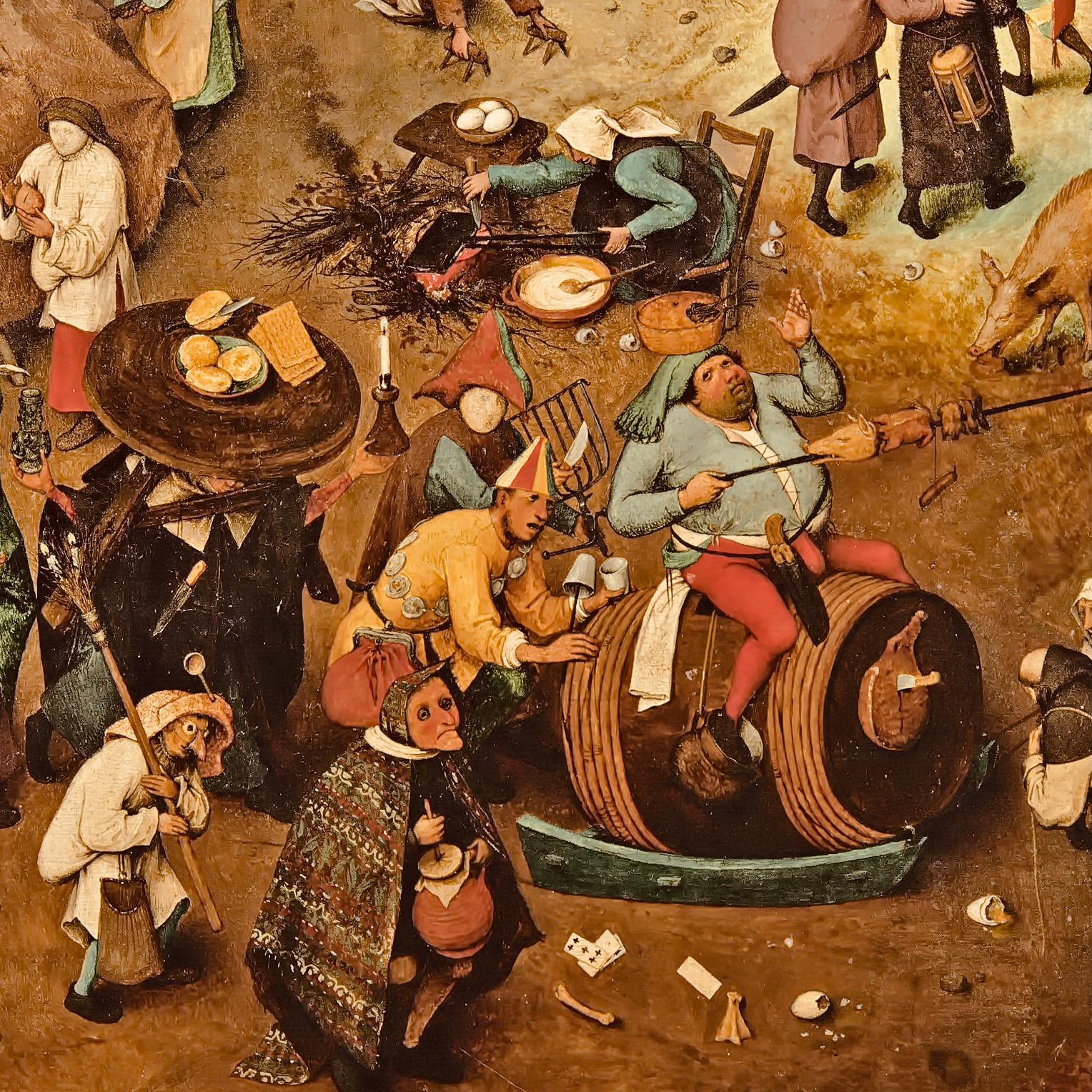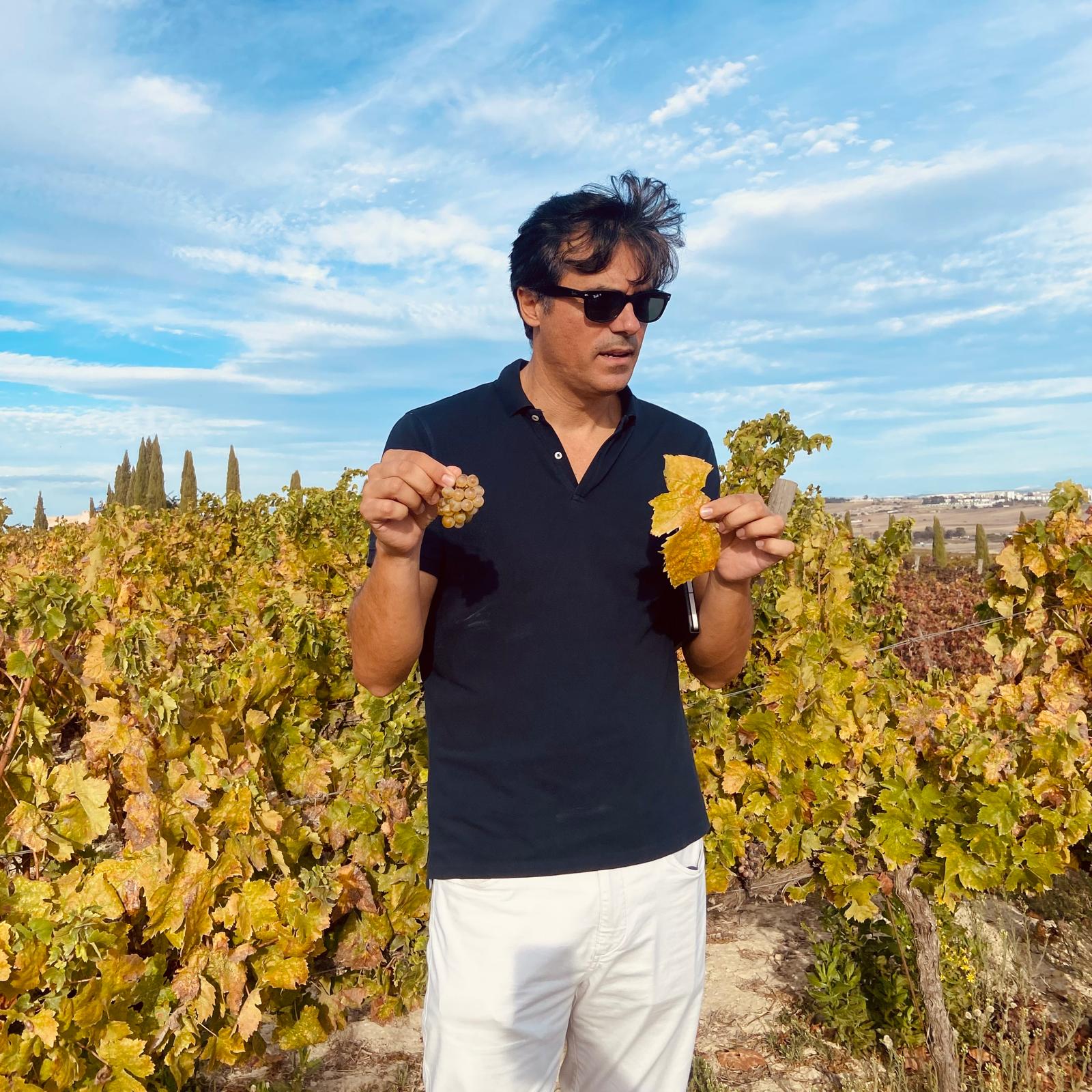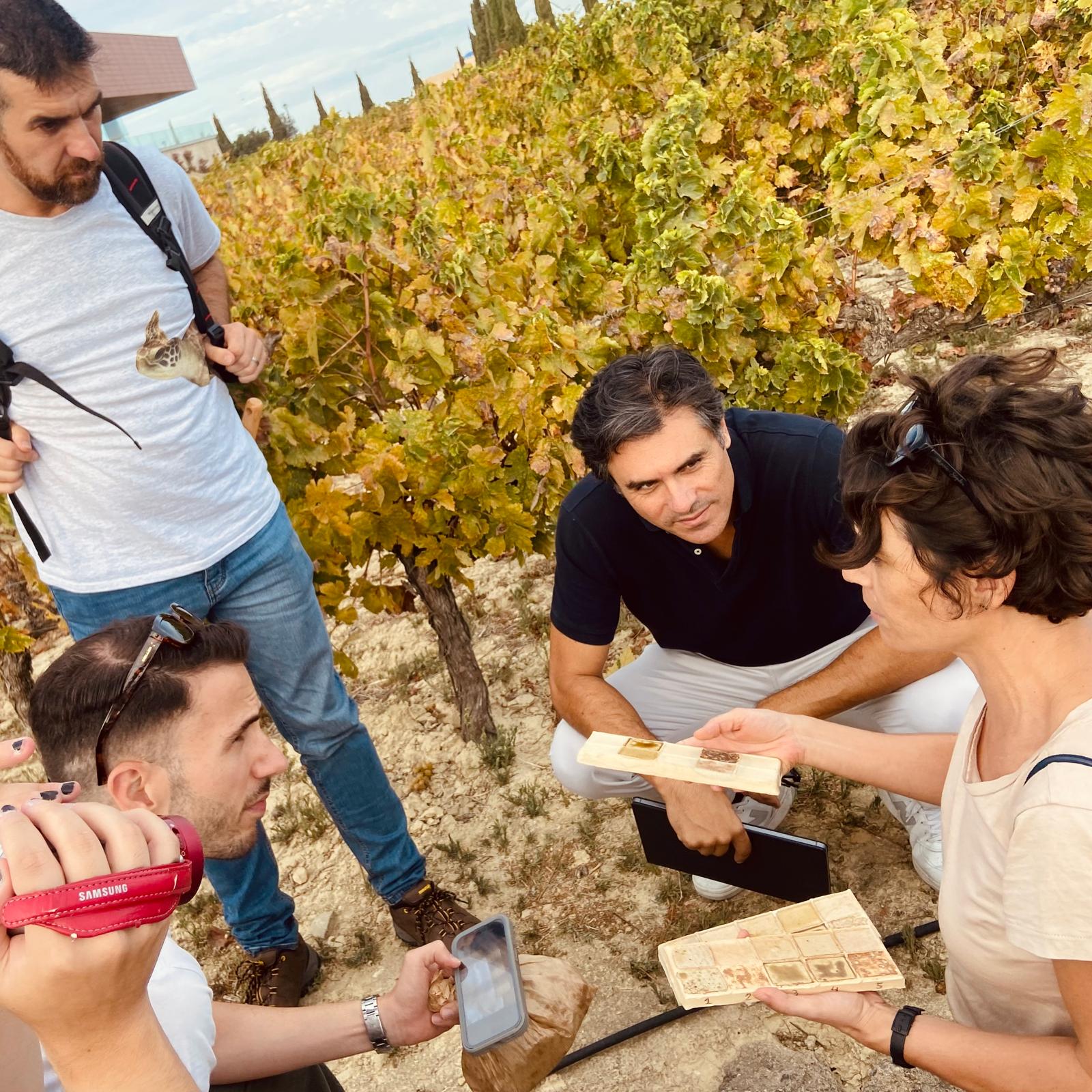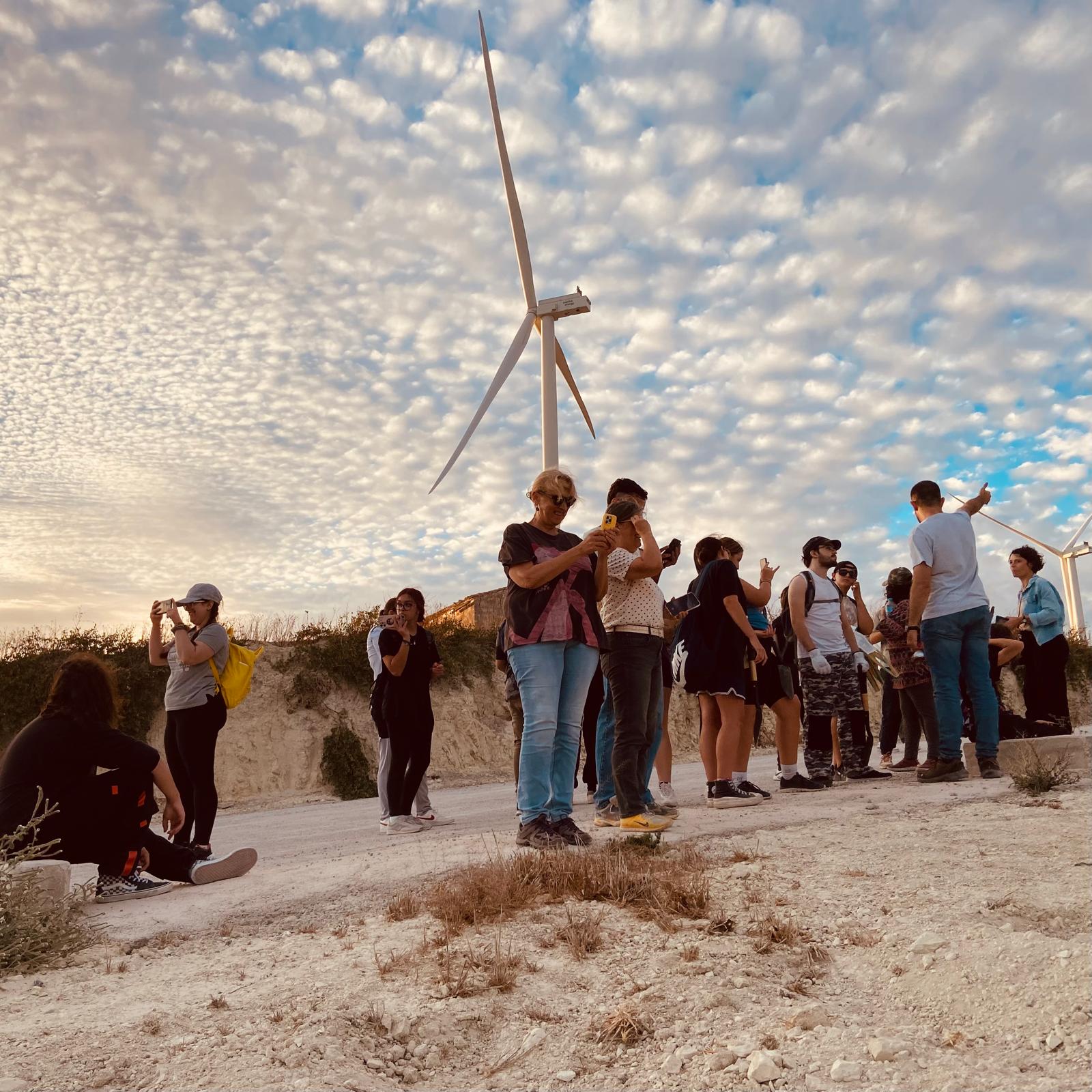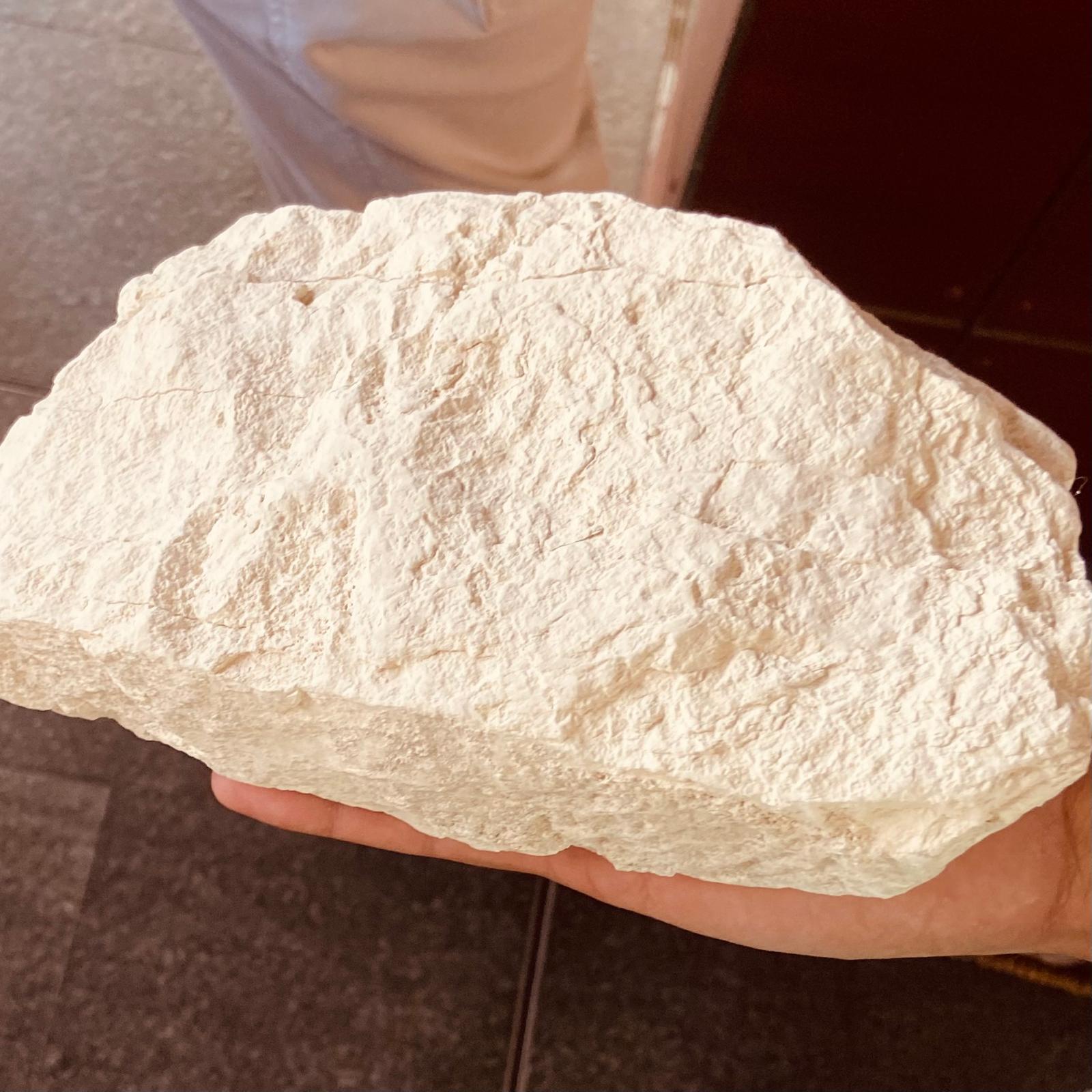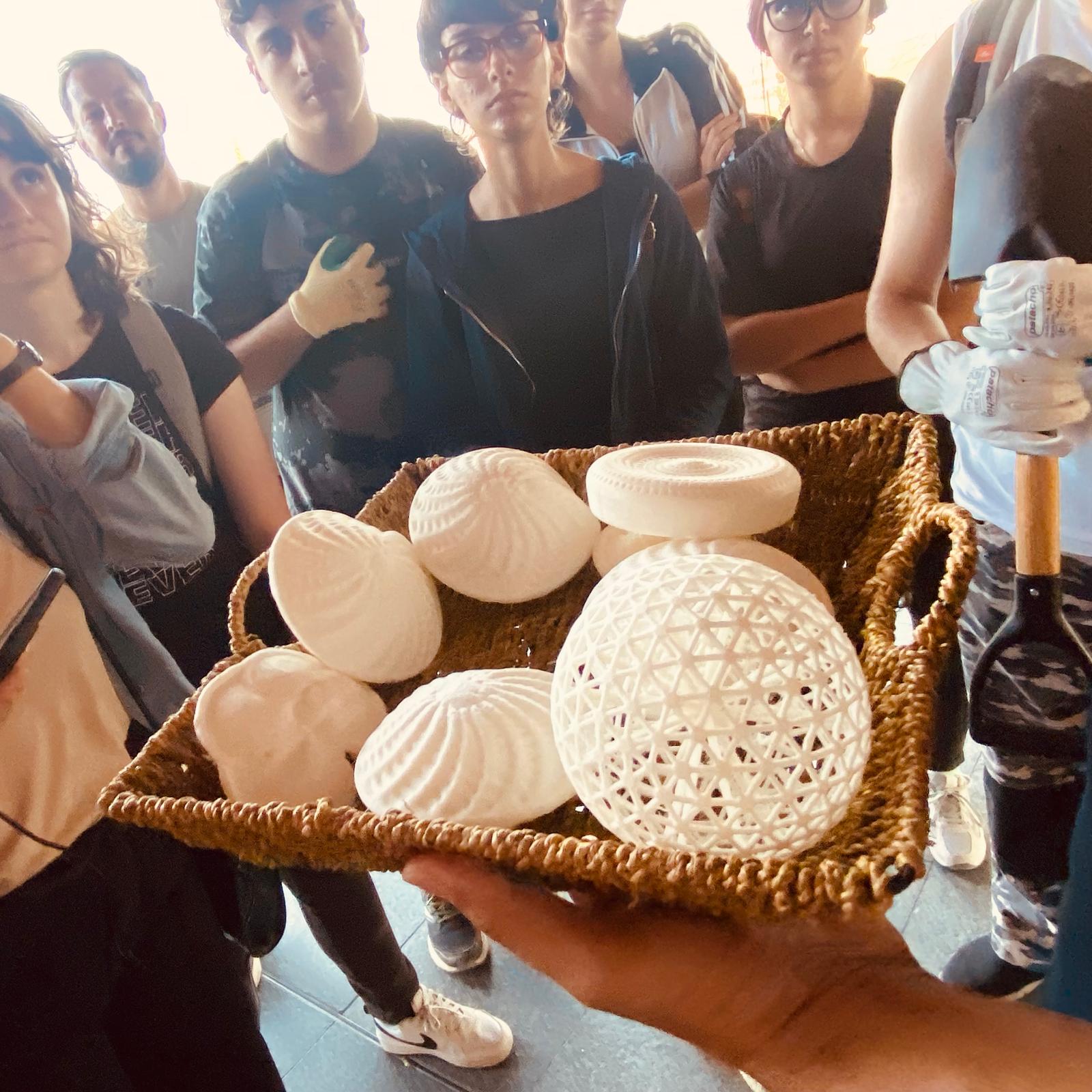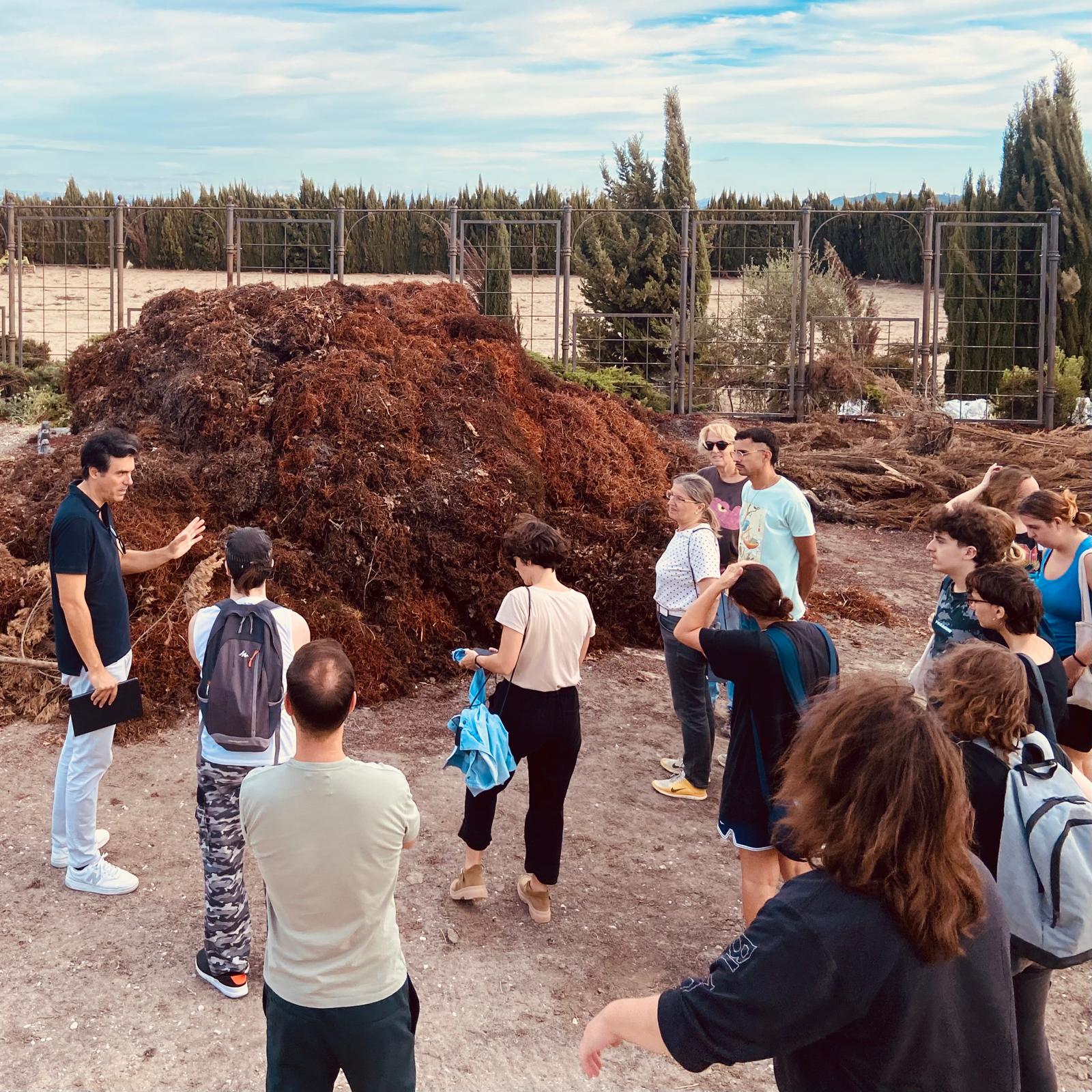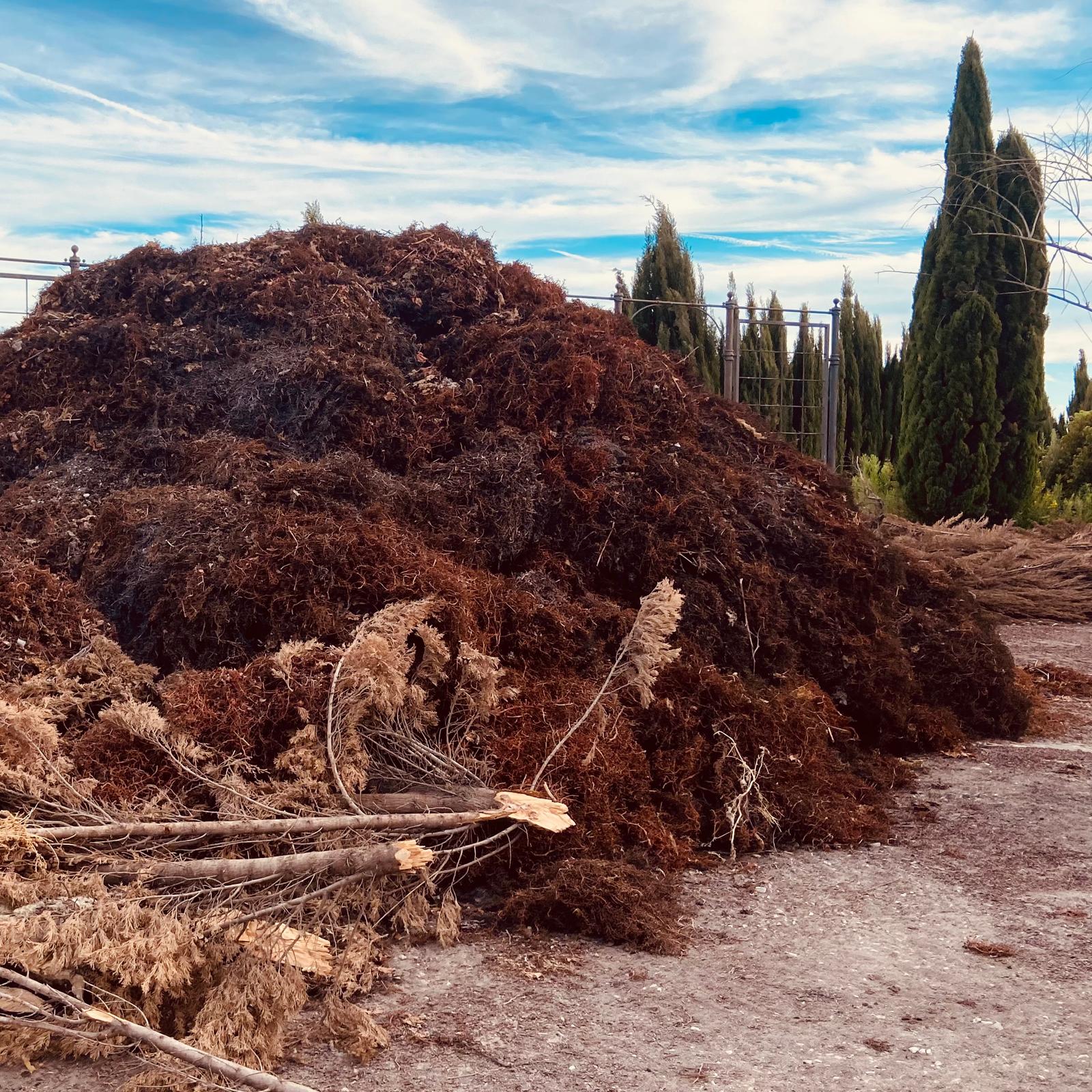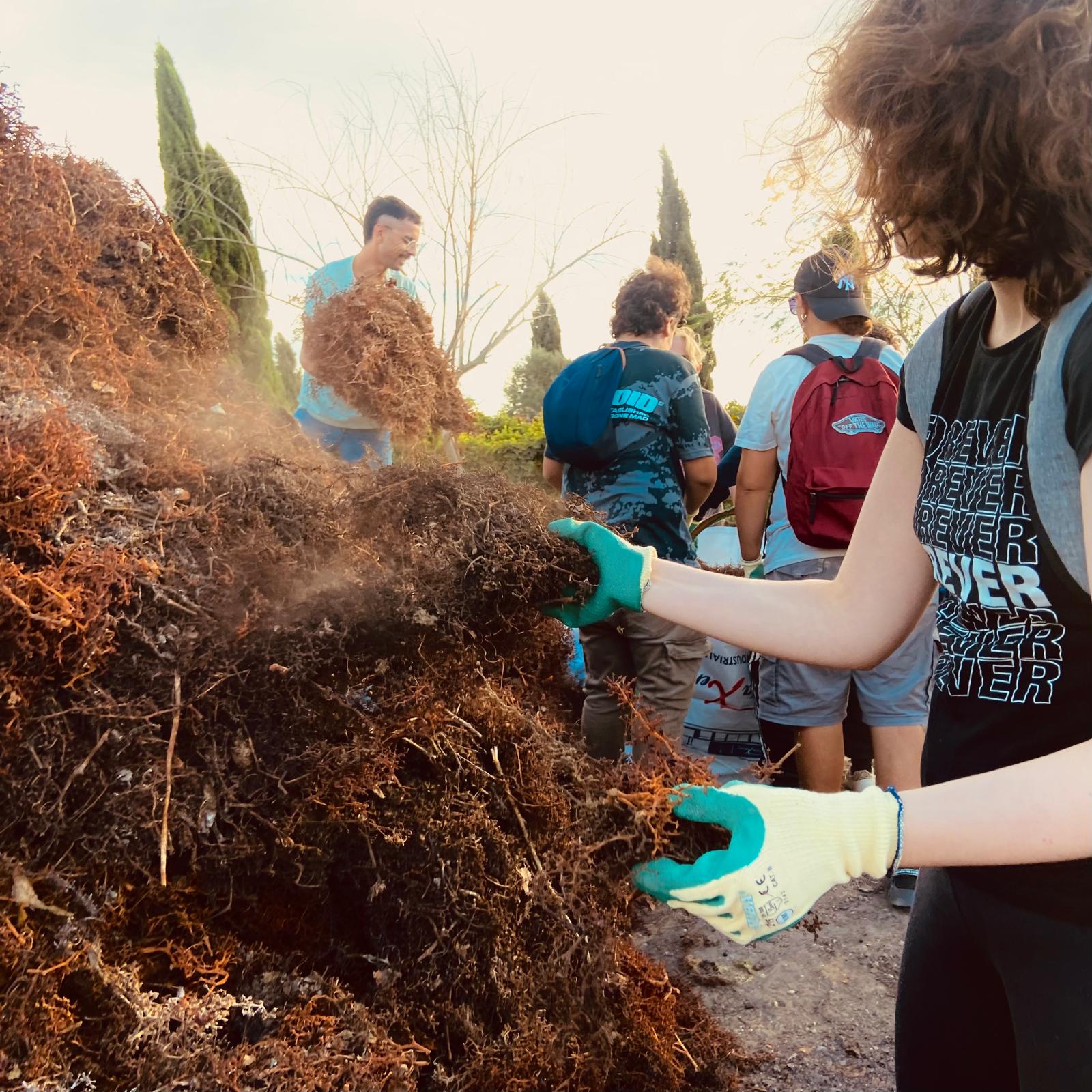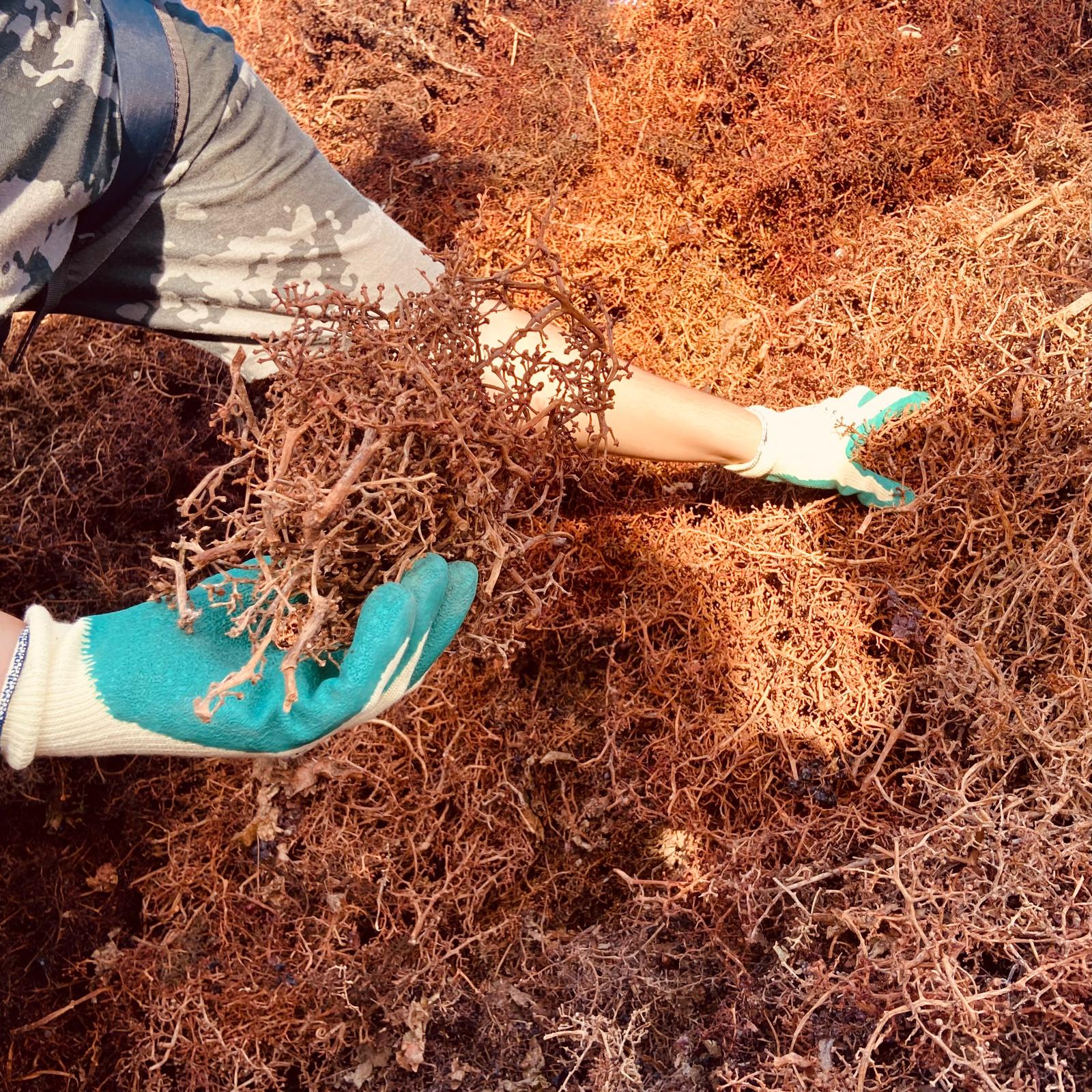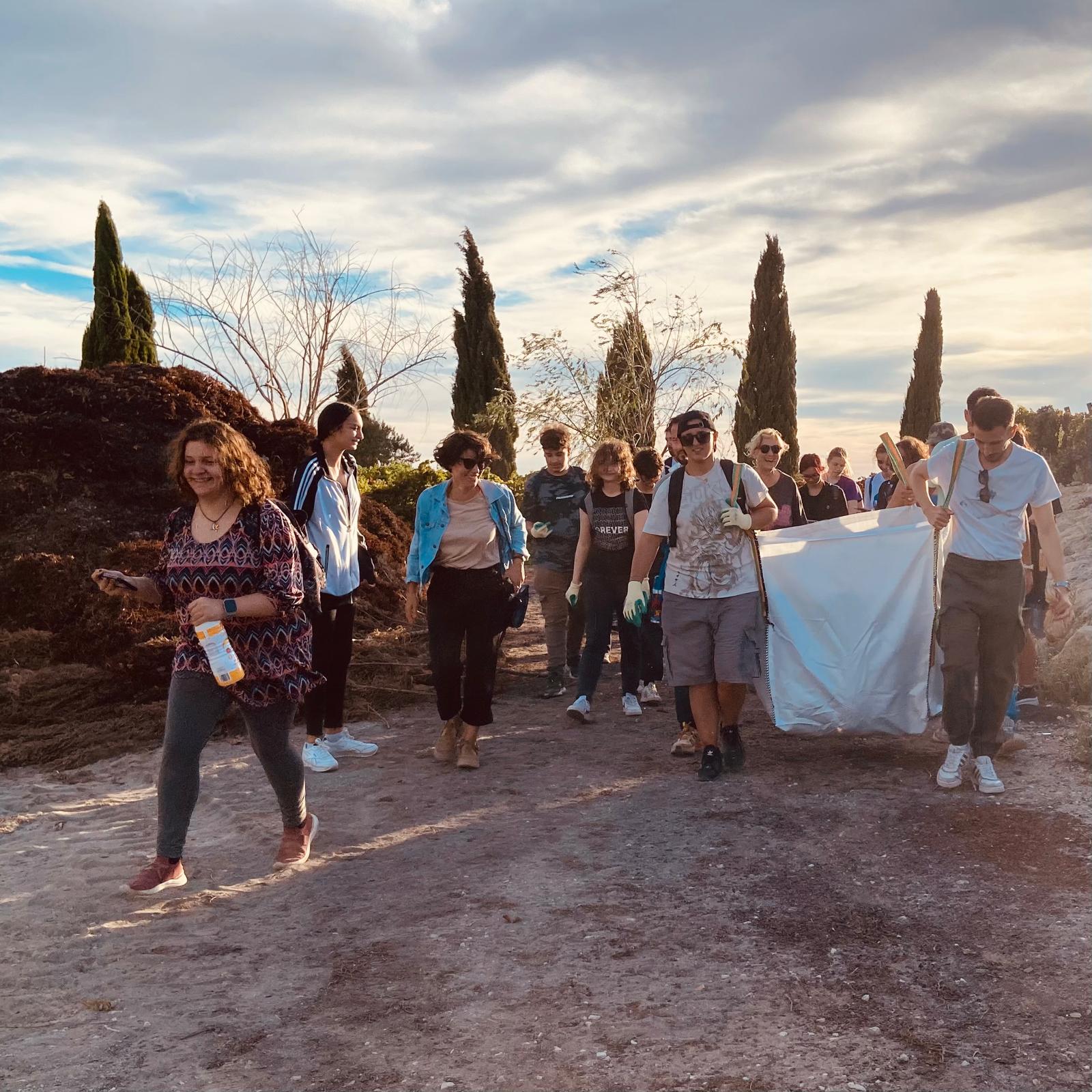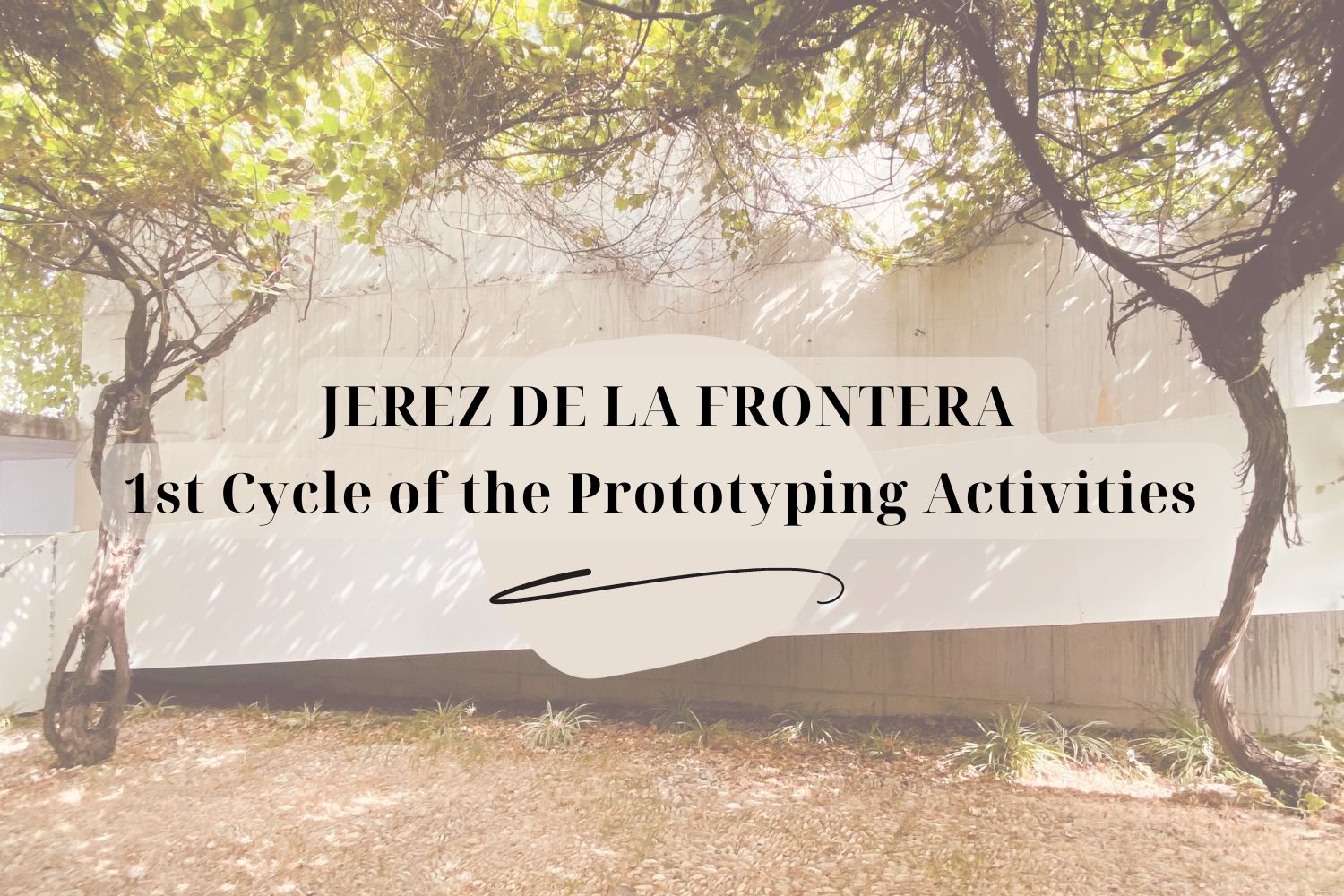
The prototyping activities of the landscape pilot in Jerez de la Frontera kicked off last week. The 1st circle of the prototyping activities focuses on the realization of Estelle Julian‘s creative proposal “The Songs of Nearby Earth” along with PALIMPSEST partners and the local communities.
During the first three days of October, a kick-off workshop was held with the students and teachers of the first and second year of the Ceramic Decoration Degree at the Jerez School of Art.
These three days aimed to present the PALIMPSEST project and the landscape challenges that Jerez de la Frontera faces, as well as to initiate working on the ceramic object and musical instrument (Zambomba), to redesign it taking into account both, its current use and its future use as a device for urban renaturalisation. The Zambomba instrument plays a key role in Estelle’s Julian proposal on supporting the landscape challenges of the city.
This workshop marked the beginning of work with the different local agents who are going to get engaged in the whole prototyping process. In this case, around the zambomba as a domestic object that has been transformed into a musical instrument, and how to redesign or shape new zambombas that take into account both its current functions and needs, and complete their life cycle giving it a new use as a device for planting vines. All this without losing sight of the local challenges, and with the need to anchor its development in vernacular landscape, traditional knowledge and local cultural expressions.
The PALIMPSEST project and SONE
After a first presentation about the concept of “mingei” by Luis Torres (teacher of ceramics in the School of Arts), Nomad Garden and Estelle Jullian introduced the PALIMPSEST project framework and SONE (The Songs of Nearby Earth) proposed by Estelle Jullian (Culturama), that is going to be developed in Jerez as the local pilot project in PALIMPSEST.
Structured in three main blocks of activities around the zambomba (object), the zambomba (ritual) and the vine trellises (renaturalisation), SONE aims to approach the territory and landscape of Jerez through artistic and design practices integrating popular knowledge, landscape practices, local cultural expressions and emblematic elements, generating spaces for reflection and landscape transformation.
Discovering the secrets of the zambomba from Jerez
As a conclusion to the first day, from the hand and word of Juan Manuel and his son, Sergio Coca, we enjoyed a masterclass from the last artisans that continue to elaborate the traditional zambomba from Jerez.
Using a ceramic jar, strings, cotton muslin, a reed (which had been harvested green months before) and the experience of many years, we were able to discover some of the secrets of making the instrument. Also about its playing, some keys to its sonority, and, in short, about a whole corpus of vernacular knowledge that is on the verge of disappearing.
Redesigning tradition
During the second day, Belenish Moreno-Gila post-composer, dramaturg and ethnomusicologist from Jerez, attended the activities, and highlighted several clues about the traditional instrument, from its history to its wide family (friction drums), and about the sonority and some of the keys to make it work musically. Her presentation and the interactive dialogue that followed was certainly an eye-opener not only about the sound dimension, shape and size, but also about the way the zambomba is played: how it is held, how it is arranged, and how it is played.
Although we were unfortunately unable to count on the presence of Juan Luis Vega due to a personal matter (Asociación Amigos de los Árboles), we also had a brief chat about the functional requirements that must be taken into account in the shaping of the new ‘zambombas’ for their use as a protection and planting device, so that they allow the vines to develop properly.
This second day ended with some words from Agustín Muñoz (first deputy mayor of Jerez City Council and Government Area of Presidency, Historical Centre, European Funds, Government Coordination and Territorial Planning) and Francisco Zurita (Delegation of Culture, Festivals, Historical Heritage and Cultural Capital) who welcomed students and teachers of the EASD to the PALIMPSEST project.
Connecting with the landscape
The third and last day of the Prototyping workshops was dedicated to a field trip to the Jerez de la Frontera wine landscape to explore and rediscover it with a new perspective.
At the top of the pago Cerro Corchuelo, Willy Pérez welcomed the PALIMPSEST team and Estelle to the Bodega Luis Pérez. With breathtaking views of the city and its territory, he conducted a master class on the culture of Jerez and its long and intertwined relationship with viticulture. Willy Pérez is an expert in viticulture and oenologist and helped the team, to discover not only the immense heritage that this landscape treasures, but also the origins and some of the keys to some very special soils, the albarizas. From its geological history (sedimentary) to its composition of biological origin (diatoms and radiolarians), and how its properties have shaped the types and forms of vine cultivation.
The field trip ended with the collection of the remains of bunches of ‘Tintilla de Rota’ (local grape variety) from the last harvest in Luis Pérez winery, and a few kilometres to the Northwest, in the pago Cerro Pelado, under the gigantic windmills, we collected albarizas from this whitish landscape, with views of other pagos such as Orbaneja, Macharnudo Bajo and the landscape of a former seabed in which brackish waters the halophilic vegetation still grows.
Stay tuned as two prototyping workshops will follow in Lodz and Milan landscape pilots!
Published on: October 10, 2024


